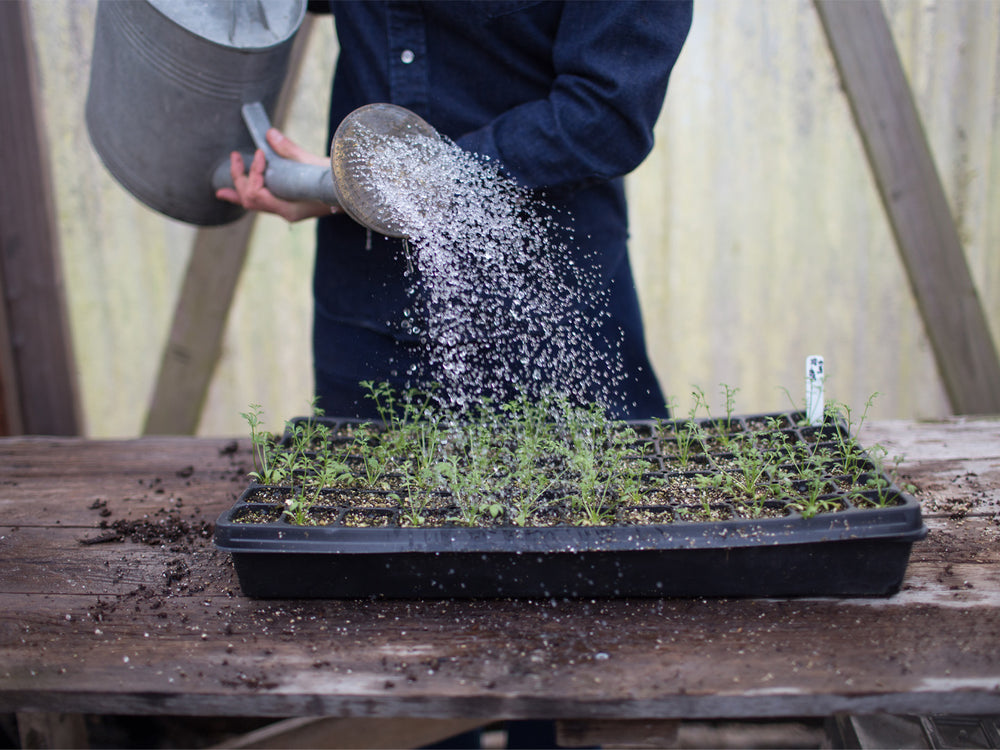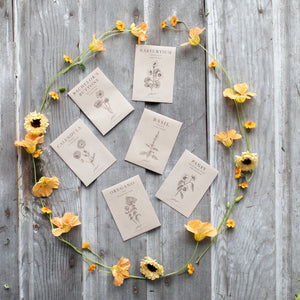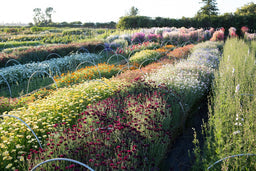Lupine ‘Sunrise’
Lupinus cruickshankii
Description
This abundantly flowering annual lupine looks like a giant Texas bluebonnet. Tall spires of soft lavender underpetals meet white top petals with yellow throats and flower over a long period of time. The sweet cherry blossom-like scent fills the air and pollinators love them. To keep this great bouquet addition churning out flowers, pinch early and pick hard.
Details
Height: 36 to 48 in
Site: full sun
Days to maturity: 90 to 100 days
Plant spacing: 9 in
Pinch: when 12 in tall
Seed Sowing & Growing Notes
Start seed indoors in trays 4 to 6 weeks before last frost; transplant out after all danger of frost has passed. Succession-plant every 2 to 3 weeks for continual harvest.
Harvesting/Vase Life
Details
Description
This abundantly flowering annual lupine looks like a giant Texas bluebonnet. Tall spires of soft lavender underpetals meet white top petals with yellow throats and flower over a long period of time. The sweet cherry blossom-like scent fills the air and pollinators love them. To keep this great bouquet addition churning out flowers, pinch early and pick hard.
Details
Height: 36 to 48 in
Site: full sun
Days to maturity: 90 to 100 days
Plant spacing: 9 in
Pinch: when 12 in tall
Seed Sowing & Growing Notes
Start seed indoors in trays 4 to 6 weeks before last frost; transplant out after all danger of frost has passed. Succession-plant every 2 to 3 weeks for continual harvest.
Harvesting/Vase Life
Sources
How to Grow

Winter Mini Course: Seed-Starting 101
Learn how to start flowers from seed in this three-part video series
In this free video series, you’ll learn everything you need to know to successfully start flowers from seed, including all of the necessary supplies, step-by-step instructions, special tips and tricks, and how to create a simple indoor seed-starting area.

















